The honesty of goal, a honest dedication to cinema, and a ardour for presenting his viewers with healthful, household leisure – when these phrases had not turned to cliché – is what sums up the work of Hrishikesh Mukherjee, who turned 100 this yr.
Hrishikesh Mukherjee gave Hindi cinema a brand new definition when he graduated from modifying to path with out giving up his old flame – modifying. He outlined Hindi mainstream cinema as healthful household leisure richly interwoven with a powerful storyline, good music, strong, full-blooded characterizations, and a probing, dissecting look into human inter-relationships.
In essence, honesty has been the hallmark of his movies, which neither pretended to be of the arty-intellectual type nor compromised to the calls for of the field workplace. But, they grew in reputation on the field workplace, taking veterans abruptly. Hrishi-da belonged to an period the place movie folks didn’t put on that imaginary halo of stardom round their heads that alienated them from the mainstream.
Hrishikesh Mukherjee started his profession in 1945 when he discovered modifying on the job at New Theatres in Calcutta. “There was no FTII (Movie and Tv Institute of India) then, and we discovered principally by observing others at work or whereas working ourselves. Those that might have taught us didn’t. World Struggle II introduced a stoop in movie manufacturing, and people keen to show couldn’t.”
He edited movies like Maa, Do Bigha Zamin, Parineeta, and so on. His first impartial work as an editor was for the Bengali movie Tathapi. “I then got here right down to Bombay in 1951 to workforce up with Bimal Roy, who, too, had simply migrated.” By then, he was bent on entering into path severely. His first effort at producing and directing his movie was Musafir, composed of three brief tales conceived by Mukherjee. On the similar time, Ritwik Ghatak collaborated on the script.
He drew closely from Bengali literature, which made his movies “humane,” as Gulzar put it. Every film bore a delicate social message, be it the neglect of the woman baby in Anupama or the unscrupulous capitalist vs. the toiling, ravenous employee in Namak Haram. “Your artwork is your perspective to life,” he’d admitted as soon as. However he constantly rated the Nationwide Award-winner Satyakam as his finest movie, produced and acted in by Dharmendra, who additionally ranks it as his finest.
We listing right here a short on the ten finest movies out of the full 41 in his lengthy profession, based on this creator, organized from the very best down.
1. Satyakam (1969)
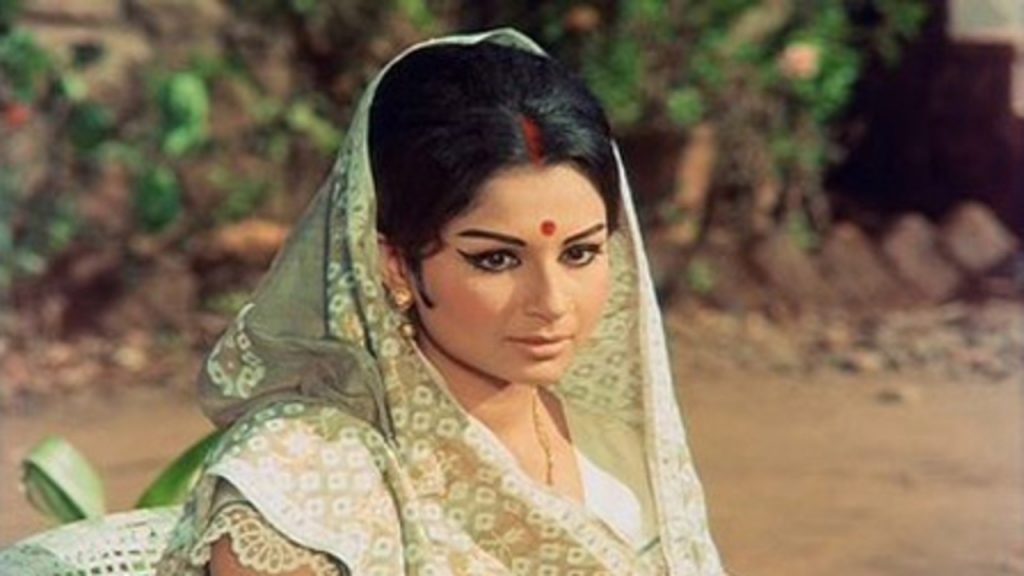
This was a really bold undertaking touched upon by Hrishikesh Mukherjee, which turned out to be a giant industrial flop. On account of its primary principle of fleshing out the character of Satyapriya Acharya (Dharmendra) as a staunch, trustworthy man who refuses to bend right down to any motion that even faintly smells of dishonesty and corruption. He was born right into a household whose custom is to talk the reality and dwell actually. Each considered one of Satya Priya’s ancestors’ names begins with the phrase “Satya.”
However it’s Mukherjee’s finest movie as a result of he took braveness in his arms to make a mainstream movie that didn’t give up to the industrial calls for made on administrators immediately or subtly. The hero can be like this. His relations and shut ones, together with his lover, who later turns into his spouse (Sharmila Tagore), undergo terribly as a result of he refuses to bend to calls for made on him that faintly counsel corruption. Actually, he stays as adamant as ever. The movie’s identify is taken from the traditional Hindu saint Satyakama Jabala. This identify belongs to a younger boy of illegitimate delivery who lived in the course of the Vedic Period and took his mom’s identify, not his father’s – ‘Satyakam Jabala.’ He went on to grow to be a Rigvedic Sage of many Suktas.
The premise of the movie was primarily based on a Bengali novel of the identical title, written by a famend author, Narayan Sanyal, which is about round 1946, simply earlier than India’s Independence. The story of Satya Priya begins in his school days when he’s finding out to grow to be an engineer alongside together with his shut buddy Naren (Sanjeev Kumar).
After their research, Satya Priya and Naren settled in several cities and pursued their careers. They incessantly talk by letters. Naren is shocked and amazed each time he learns that Satya Priya will get fired or quits his job as a result of he wouldn’t lie or bear the corruption in his workplace. Naren begins to grasp Satya Priya’s vanity and “legal guidelines” about dwelling an trustworthy life.
A gaggle of engineering college students graduated a number of months earlier than Independence. Satyapriya and Naren, shut associates, are amongst them. The principality of Bhawanigarh is run by a merciless, dissolute man, Vikram Singh, who is aware of his days of absolute energy are numbered. Satyapriya Acharya finds employment in Bhawanigarh, then meets and marries Ranjana underneath peculiar circumstances.
It creates huge points in his household, notably together with his grandfather, who raised him. The orthodoxy of the instructor clan of the Acharyas precludes the admission of Ranjana into the family as she has a shady previous. Satyapriya, an epitome of integrity, refuses to utter any untruth. Consequently, he and his household face difficulties. The prime sufferer is his spouse and baby. It takes a loss of life within the household to convey a reinterpretation of custom and relationships.
The movie touches the guts and soul of the viewer by dialogue, feelings, guilt, and shock in equal measure. In the direction of the top of the movie, Ranjana’s (Sharmila Tagore) son (Sarika) tells out the identical bitter reality fearlessly -and wins over the somewhat principled grandfather (Ashok Kumar). The songs and background music don’t contact any chord inside and outdoors the movie. Ashok Kumar’s styling with the lengthy hair, lengthy beard, and costume made to repeat Rabindranath Tagore goes towards the precept of honesty that the movie vouches for and the character. Nevertheless it disappears in a while.
Satyapriya’s honesty prices him his job, friendship, and every part demanded from unusual life, however he doesn’t budge from his stance. That is the one movie in Hindi cinema to have tackled the worth of honesty so actually and brutally. This movie marks Dharmendra’s finest efficiency of his profession, and Sanjeev Kumar additionally stands out. However commercially, the viewers turned its again on the movie.
2. Alaap (1977)


This author considers this movie among the many ten finest Amitabh Bachchan starrers through which the director-writer Hrishikesh Mukherjee took him fully out of his ‘offended younger man’ field. It was a problem to his display screen picture – to carry out because the son of one other nice actor, Om Prakash, and final, however by no means least, bringing to celluloid life among the best father-son relationships in Hindi cinema, second to none apart from the opposite Bachchan father-son battle movie in Ramesh Sippy’s Shakti.
One other distinctive function of the movie is its casting of Om Prakash in a really critical, emotional, and touching function, far-off from the comedy he was well-known for and for which he had grow to be a reputation to be reckoned with. Alaap is among the most emotionally wealthy portrayals of the battle between a rich advocate and domineering father, Triloki Prasad (Om Prakash), and his youthful son Alok (Amitabh Bachchan), who’s passionate a couple of devoted profession in Hindustani classical music.
His father needs him to affix the household enterprise. However Alok prefers to drag a tonga and switch to music as his dedication and livelihood over becoming a member of his father’s observe. He leaves his father’s abode and finds life extraordinarily tough, with solely music as his technique of survival. Om Prakash and Amitabh Bachchan are completely matched as father and son strolling in diametrically reverse instructions, however at all times hating it.
Associated To The Best Movies Of Hrishikesh Mukherjee: All Ritwik Ghatak Movies Ranked
It’s one other Hrishikesh Mukherjee movie with two closures, one tragic and the opposite open-ended. When Alok is found as affected by tuberculosis with no cash to get handled, his father rushes to his aspect, assembly his son in dire circumstances and unwell well being. He’s recommended to go away for therapy elsewhere on a speeding prepare. The different signifies that he passes away, and the daddy is left to grieve over his son’s demise. Rekha is solid as his very understanding girl love to face behind him by thick and skinny, however her character is marginalized to the father-son battle.
There have been a couple of dozen songs within the movie, which might simply classify it as a musical. Nonetheless, the human drama was so wealthy in expression and efficiency that even the attractive compositions by Jaidev on lyrics penned by Rahi Masum Reza and one by Harivansh Rai Bachchan are much less spoken about in the present day than the father-son battle. A novel by Harindranath Chattopadhyay impressed the story thought.
But, all mentioned and performed, the musical rating by Jaidev with Yesudas lending his voice to 2 son numbers, Chand Akelaa Jaaye Sakhi Ri and Koi Gaata Mai So Jaata, added the mandatory lyricism to an in any other case darkish movie. It turned out to be a industrial flop as a result of nobody in these days might settle for the Bachchan persona to be a failure in life.
3. Musafir (1957)
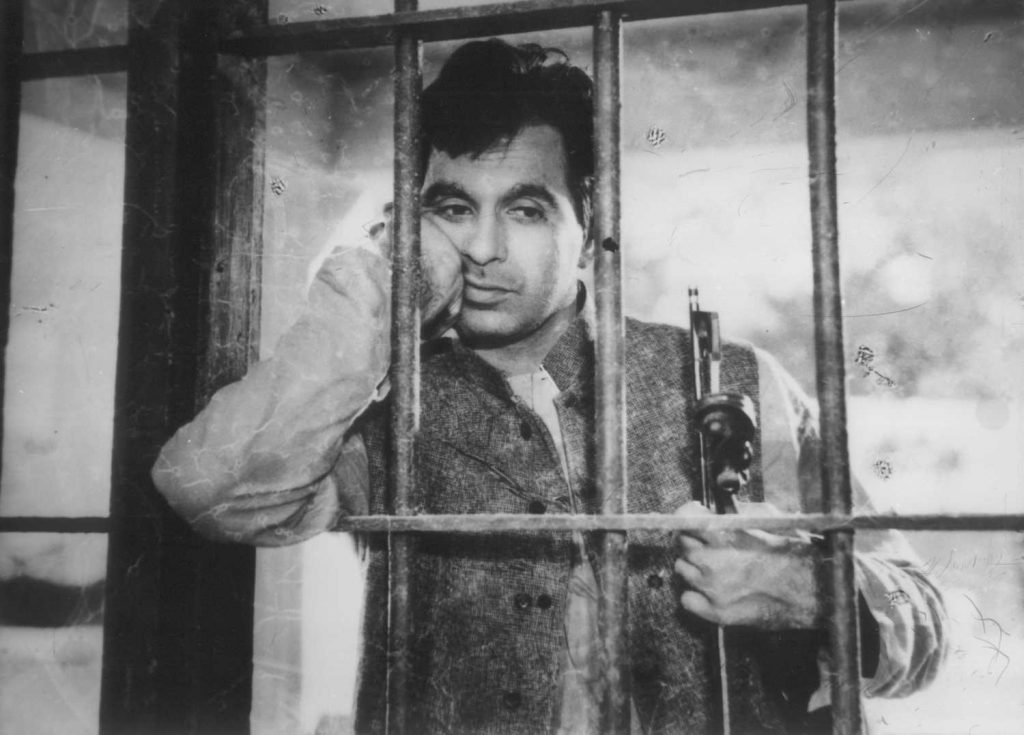

Few kids of the current technology have seen Mukherjee’s directorial debut movie, Musafir. As a result of the print of the movie has maybe been misplaced to time. And few have any recollections of getting watched the movie. It carried the seeds of a large tree ready to flourish, unfold its branches extensive and roots as deep as a banyan tree, and marked many “firsts” in Indian cinema.
It’s maybe the primary anthology in Hindi cinema as a result of it narrates three completely different brief tales with one frequent issue that binds them to the story – a home that’s not essentially a “house” as those who dwell listed below are mere “vacationers” who keep for a while after which transfer away. Thirdly, that is the only real movie in his complete profession through which Dilip Kumar lent his voice to a tune – lagi nahin chute rama.
He was very apprehensive about singing the tune because it was a duet with the formidable Lata Mangeshkar. It took Lata’s reassurances and, based on Salil Chowdhury, three brandies earlier than he recorded the ultimate take. He vowed by no means to sing for movies once more after this expertise.
Fourthly, the tales had been penned by Hrishikesh Mukherjee and Hritwik Ghatak, who later grew to become iconic filmmakers. Fifthly, it makes use of the evolution of a tree from its seeds proper by its flowering over the three tales sure by the three info of life – delivery, marriage, and loss of life.
The hyperlink that unites the three tales is a home that’s rented out to completely different tenants who, once more, transfer out and in with none ties to 1 one other besides the tree, which symbolizes the time-lapse over the three tales. The seed Shakuntala sows within the first story germinates within the second and flowers within the third, as does life, which runs full circle — marriage, delivery, and loss of life.
Musafir opens with Balraj Sahni’s voiceover and the digicam shifting to a scruffy blockhouse: “Lakh lakh makaan aur inmein rehnewale karodon insaan. In karodon insaan ke sukh dukh, hasne rone ke maun darshak hain yeh maun makaan. Theek musafiron ki tarah yahan log aatein hai, rehte hain aur chale jaatein hain. Yahin janam hota hai, vivah hota hai aur hoti hai mrityu. Musafir teen kirayedaron ke jeevan chakron ki kahani hai jo ek ke baad ek is makaan mein rehne aate hain.”
This translation reads, “Scores of individuals dwell inside these homes. They’re mute spectators to the ups and downs of their lives. Individuals come right here like vacationers and go away. Some are born right here. Some get married right here. And a few die right here. Musafir is the story of three such tenants who got here to dwell on this home.”
This units the tone of the movie with among the best-known star actors of the time, amongst whom two had been nearly on their means out of the business, corresponding to Usha Kiran and Shekhar, alongside David, who was a famous character actor of his time – Nazir Hussain and Nirupa Roy. And eventually, the movie featured one of many rarest of uncommon appearances of Suchitra Sen in Hindi cinema. The home turns into a personality within the movie because the three associated household tales unfold with different frequent traits and personalities.
4. Anupama (1966)
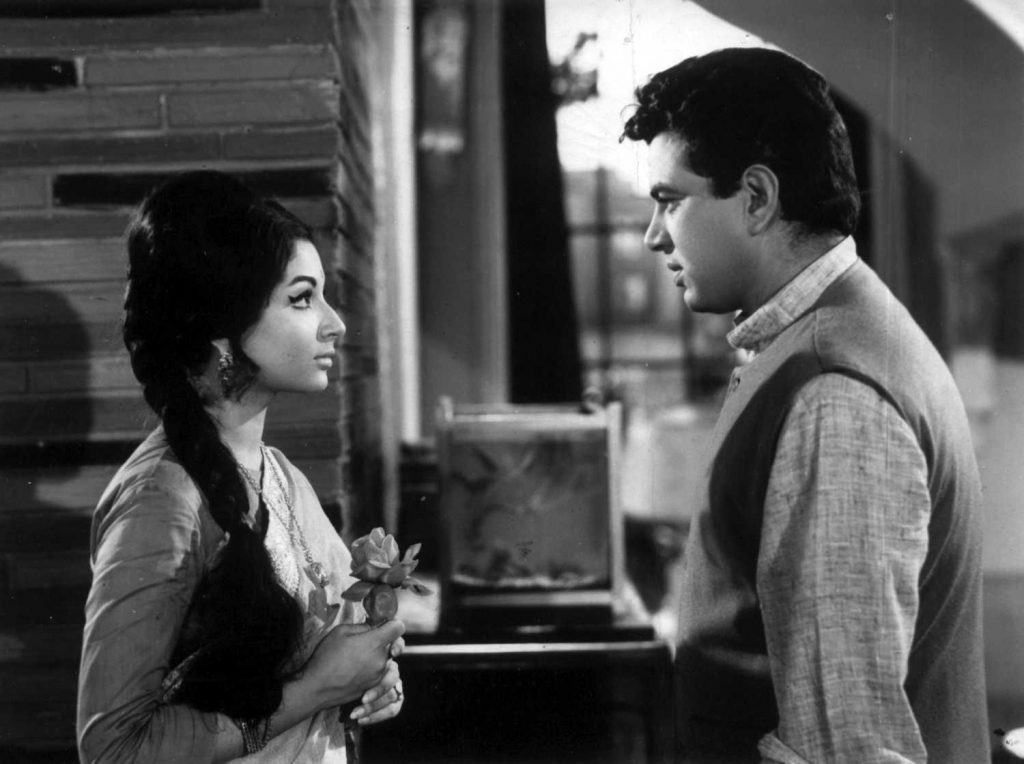

It’s the first movie in Hindi cinema, primarily based on a narrative by Mukherjee himself however penned by Rajinder Singh Bedi, which takes a singular have a look at the father-daughter relationship. This author watched the movie thrice in fast succession. It narrates a really uncommon story of a younger and delightful woman known as Uma (Sharmila Tagore) who’s an entire introvert as a result of all by her life, her father (Tarun Bose) can’t stand the sight of her as a result of his spouse and her mom died at childbirth.
This deep guilt is internalized by the younger woman who spends her time within the backyard, taking a look at or speaking with the fish in an aquarium, or protecting to herself utterly, shutting herself off from mainstream society. The ayah who introduced her up from infancy is her solely firm. Her father does love her, however he takes a have a look at her solely when she is quick asleep.
Additionally Learn: 7 Best Movies of Tarun Majumdar
Uma hardly speaks proper by the movie, even when she falls in love with the unemployed instructor, author, and poet Ahok (Dharmendra), whom she occurs to fulfill at a buddy’s (Shashikala) celebration. The movie additionally marks considered one of Dharmendra’s most difficult roles, and he doesn’t want to make use of his fists to punch the villain or scream out at everybody, enjoying a special model, not the macho hero in his different movies. He does a superb job of it, as does Shashikala in an off-beat and sympathetic function, and Tarun Bose as Anupama’s father.
The 5 songs within the movie, composed by Hemant Kumar with lyrics by Kaifi Azmi, stay a milestone in Hindi movie music, and the positioning of the songs throughout the visible framework of the movie can be outstanding. Jaywant Pathare’s cinematography on this Black-and-White situation is so good that it fetched him the Filmfare Award for Best Cinematography in Black-and-White for his work within the movie. In distinction, the movie itself bagged the Nationwide Award for Best Function Movie in Hindi.
5. Anand (1971)
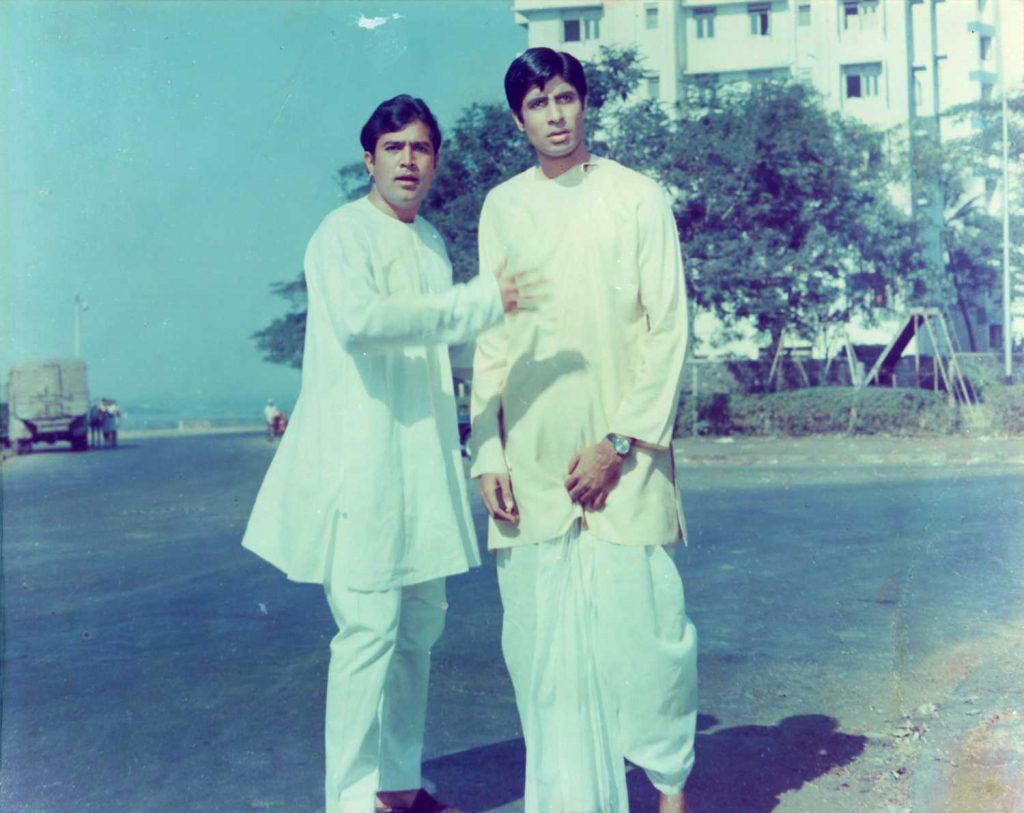

Anand is the biggest-ever industrial hit amongst Mukherjee’s complete oeuvre and the most important field workplace hit of that yr. Different options make it a standout movie within the historical past of Hindi cinema. One, Salil Choudhury, composed the music and had completely different playback singers, together with Mukesh, belt out the songs. Two, Anand is counted among the many 17 consecutive field workplace successes of Rajesh Khanna between 1969 and 1971.
Three, it turned Amitabh Bachchan, who was churning out one flop after one other, into an in a single day star, although he performed an analogous function. 4, it pushed up the field workplace worth of Rajesh Khanna and consolidated his star worth by a number of notches. 5, it didn’t have a lot romance for the hero, and but, although the movie ended with the hero’s loss of life, it grew to become a thumping field workplace hit. Anand is among the solely two movies through which Khanna and Bachchan have starred collectively– the opposite being the 1973 movie Namak Haraam, additionally directed by Hrishikesh Mukherjee.
Mukherjee mentioned that Anand was loosely impressed by Ikiru, a southern movie, and initially thought of Shashi Kapoor and Raj Kapoor for the lead function within the early Nineteen Sixties. The character of Anand was impressed by Raj Kapoor, who used to name Mukherjee “Babu Moshay.” It’s believed that Mukherjee wrote the movie when Kapoor was severely unwell, and Hrishikesh Mukherjee thought that he may die. The movie was devoted to Kapoor and the folks of Mumbai.
“Zindagi badi honi chahiye, lambi nahin” is an immortal line expressed by Anand within the movie. It has grow to be a daily line in different motion pictures the place any character quotes it as a philosophy of Life and dwelling. Anand is a affected person with terminal intestinal most cancers and is dropped at Dr. Bhaskar Banerjee for therapy.
The physician (Bachchan) is initially shocked and offended when he sees the lightness with which Anand treats his terminal ailment, which supplies him simply six extra months to dwell. Anand says, “Dying is only a second, identical to the million moments we dwell day-after-day; why ought to I be anxious about that one second and spoil the moments that I will likely be dwelling in these six months?” The songs are additionally immortalized by Choudhury and Gulzar, who wrote some lyrics and dialogue. Johnny Walker, Lalita Pawar, Ramesh, and Seema Deo fleshed out very offbeat performances within the movie that Mukherjee is known for.
Anand stays a cult movie, treating loss of life as an eventual casualty of Life. Additionally it is remembered for its feather-light thrives of humor, bonhomie, and a contact of romance tinged closely with melodrama. It runs alongside a number of tracks, involving a deeply evolving friendship between Anand and his younger physician Bhaskar Banerjee (Amitabh Bachchan), his self-constructed ‘household’ relationship together with his physician buddy Kulkarni (Ramesh Deo) and his spouse, the aged nurse who moms him and Bhaskar’s spouse who unravels the story of his misplaced love by a dried up rose hidden in Anand’s poetry pocket book.
6. Anuradha (1960)
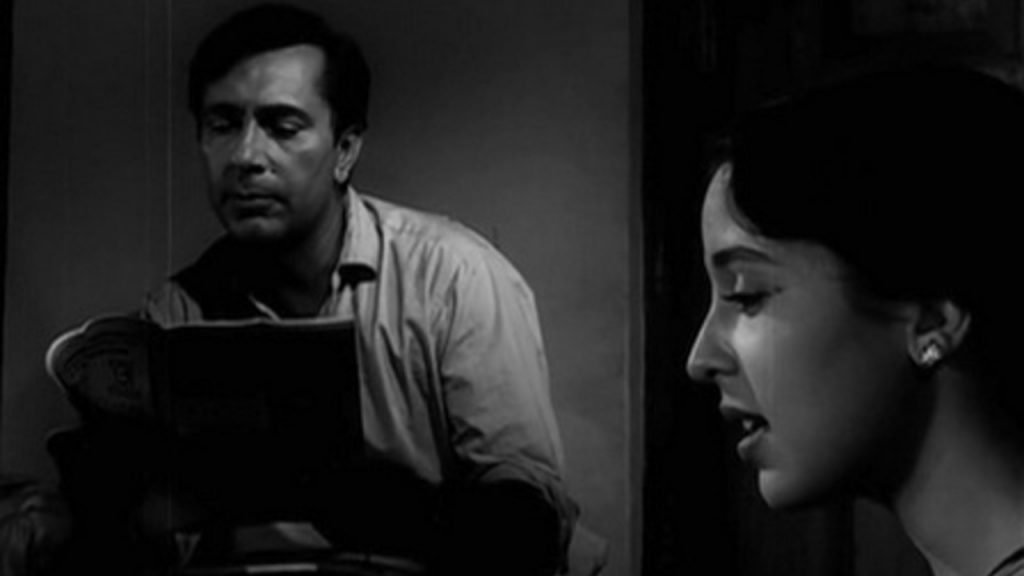

Anuradha was one of many earliest movies directed by Hrishikesh Mukherjee, which had a really memorable musical rating by Pandit Ravi Shankar on lyrics penned by Shailendra. It’s the solely movie within the historical past of Hindi cinema to pair Balraj Sahni and Leela Naidu as husband and spouse, and Abhi Bhattacharya because the third angle in an imaginary triangle.
Some research say that the movie was impressed by Gustave Flaubert’s well-known novel Madame Bovary, nevertheless it doesn’t bear any semblance to this novel. The movie additionally marked the debut of Leela Naidu in Indian cinema, and she or he as soon as bagged the Miss India title. However her profession in movies was comparatively short-lived. The movie received the President’s Gold Medal on the Nationwide Movie Awards.
Associated Learn: The 10 Best Indian Movies of All Time As Chosen By FIPRESCI-INDIA
The movie was shot in Black-and-White and was dealt with with nice restraint by Mukherjee with out as soon as resorting to melodrama that touched his later movies. The restraint was doable with a superb actor like Balraj Sahni, who performs a health care provider who chooses to observe in a distant village to provide medical help to the villagers.
Anuradha falls in love with this quiet and calm physician. Not solely does she reject the negotiations with an England-returned gentleman (Abhi Bhattacharya) organized by her father, however she additionally willingly provides up an up-and-coming profession in music. However does she regulate to the distant life-style of wifehood and motherhood all the time? Or does she nurse regrets? The movie closes with Anuradha nearly pressured to decide on between her household and the provide of returning to town and getting on together with her music, and together with her alternative, the movie closes on a cheerful be aware. It is among the first Hindi movies to provide girls the correct to decide on.
7. Abhimaan (1973)
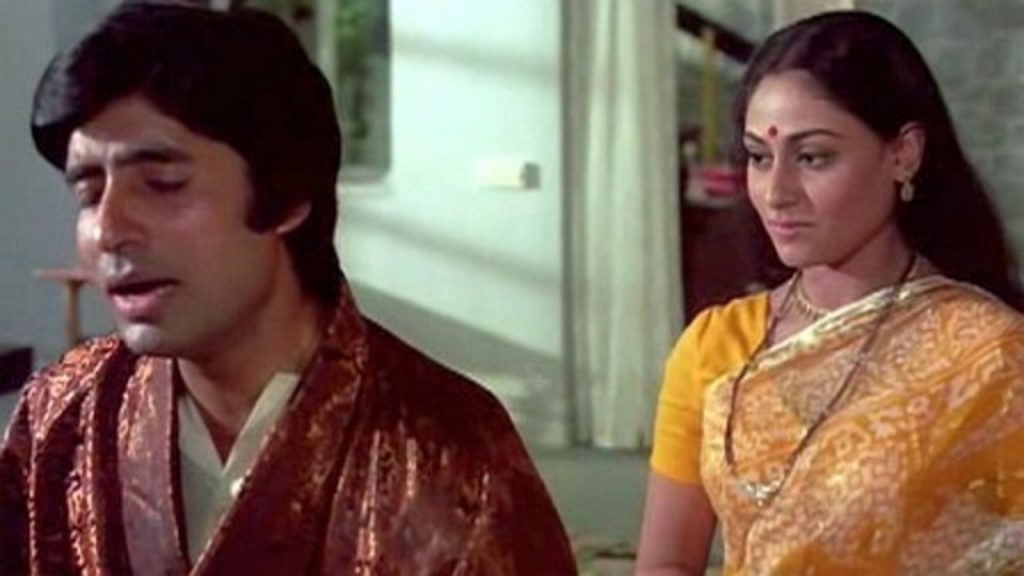

The inaugural movie, which doubled up as a birthday tribute to Amitabh Bachchan, was Abhimaan (1973), that includes Amitabh Bachchan and his spouse, Jaya Bachchan. The movie, aside from being enriched by the sterling performances of the lead pair together with Asrani, A Okay Hangal, Bindu, and David in vital character roles, stands out due to the “pooled” storyline, script, and dialogue popping out of the highly effective pens of Rajinder Singh Bedi, Nabendu Ghosh, Biresh Chatterjee, Hrishikesh Mukherjee himself, Mohan N. Sippy and Biren Tripathi.
Since so many influential writers collaborated on the storyline, script, and dialogue, it had a skewed narrative that went astray within the center and was neither right here nor there. It started with a battle of expertise between a well-known singer, Subir Kumar (Bachchan), and a village maiden, Uma (Jaya Bachchan), after they acquired married. Uma can be a educated vocalist, and Subir Kumar has no objections to her becoming a member of him in his vocation. However it’s found that she is way more proficient than her husband, and he steadily declines as her reputation and fame rise.
He can’t tolerate this, which is obvious in his conduct towards his spouse. The spouse, harm past phrases, returns to her village house, however he doesn’t know she is pregnant when she leaves. Until this level, the story presents a really uncommon perspective of the husband-wife relationship. However after Uma miscarries, the story steadily declines to pure melodrama, spoiling every part constructed up so rigorously. The music varieties the spotlight of the movie, scored by S.D. Burman was in his prime and bagged the Filmfare Award for Best Music. Jaya Bachchan acquired the Best Actress award too.
8. Golmaal (1979)
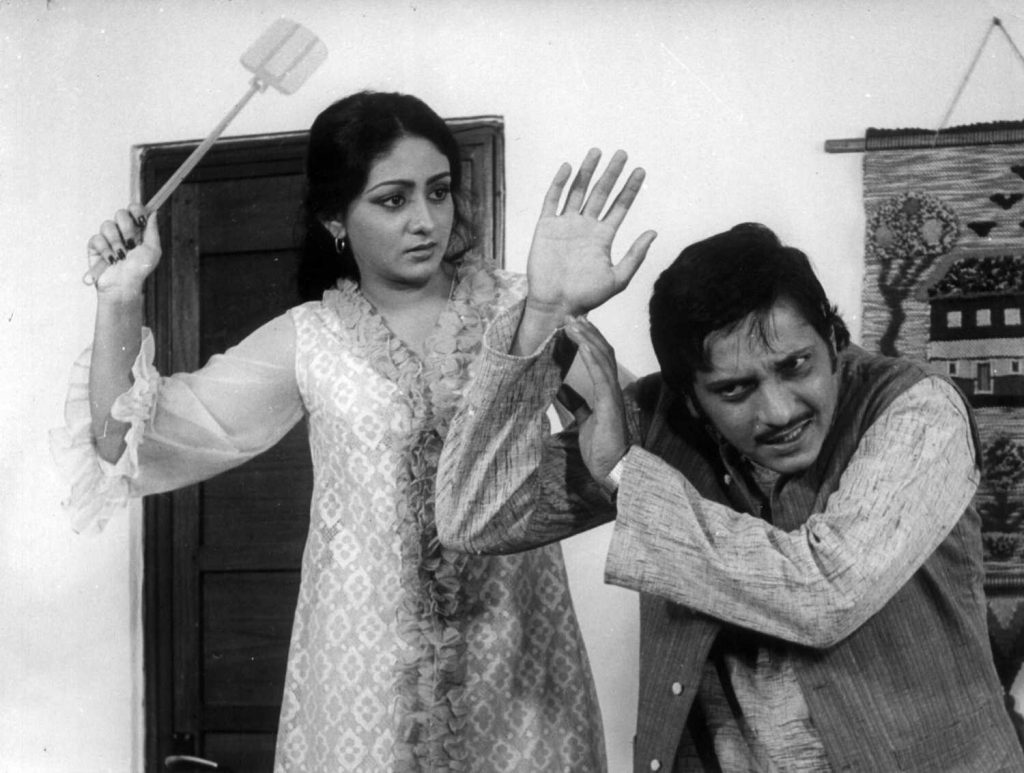 (*10*)
(*10*)
A easy lie about having a look-alike twin brother turns into an elaborate, if not dangerous, plan of deception on this hilarious comedy about an worker making an attempt to trick his conservative boss into protecting his new high-paying job. Hrishikesh Mukherjee’s 1979 cult comedy was remade in Tamil as Thillu Mullu, in Kannada as Aasegobba Meesegobba, in Malayalam as Simhavalan Menon, and the Sinhalese language as Rasa Rahasak.
Gol Maal is a traditional instance of Mukherjee’s versatile expertise as a director who might deal with comedy as successfully as he might sort out critical and tragic genres. It’s commendable as a result of comedy as a style is probably the most tough to current and execute. The movie is stuffed with good humor, which raises it to the next dimension as a movie per se and as a comedy movie specifically.
He selected Amol Palekar to play the middle-class protagonist caught between his boss (Utpal Dutt) ‘s compulsive obsession with each man who should put on a mustache. In distinction, the character performed by Palekar finds his place threatened simply because he doesn’t put on a mustache. So, he “invents” an an identical twin who’s the other of his delicate and simple nature, carrying colourful garments, displaying off in model, and romping round merrily with the presence of a mustache, which then pulls the boss to this man with out having the slightest clue that the 2 males are the identical!
Associated Learn: 10 Important Bengali movies of the Final Decade (2010s)
The very nicely thought-out casting, comprised of Amol Palekar, already generally known as the straightforward man with unheroic-like traits since his first movie Rajanigandha, fleshes out this easy character so nicely that he seems to have walked out of actual life. The man is pressured to steer a double life, on the one hand, to save lots of his job and, on the opposite, to save lots of his love story because the woman he loves occurs to be his boss’s daughter, performed with bubbly exuberance by Bindiya Goswami.
Utpal Dutt provokes pleasant enjoyable each different minute, usually joined in by the fantastic Dina Pathak, who joins the hero’s recreation of false play. She, too, performs two roles in serving to the character performed by Amol, and the movie turns into a laugh-a-minute enjoyable with out as soon as turning to vulgarity or jokes in dangerous style.
R D Burman’s “Golmaal” and Kishore Kumar’s “Aane Waala Pal” are songs that fill one with a phenomenal mix of happiness and sorrow. Golmaal, to today, stays one of the family-friendly and excellently carried out and executed comedies of all time. It was tailored from a Bengali novel by Sailesh Dey.
The movie bagged a number of Filmfare awards, corresponding to Palekar bagging the Best Actor Award, Utpal Dutt successful the Best Comic Award, and Gulzar successful the Best Lyricist for the tune – Aanewala Pal Jaane Wala Hai. On this movie, Palekar had the problem of performing a double function, one man with two faces — one, a easy soul, and the opposite, pretentious; one, an introvert, and the opposite, garrulous. It was powerful, however Palekar took to the function like a duck takes to water.
9. Namak Haraam (1973)


I’ve saved this in the direction of the top of this listing due to the somewhat dramatic twists Mukherjee used so as to add extra drama to the connection between the very poor Somu (Rajesh Khanna). The rich industrialist’s son Vicky (Amitabh Bachchan) was not wanted in any respect on this movie, because the story was highly effective in itself as a phenomenal saga of the friendship between socially and financially unequal folks, through which one of many two associates is sacrificed to maintain the established order between the 2 unequal.
Somnath (Rajesh Khanna) lives in a shanty home in a Delhi slum together with his widowed mother and single sister, Sarla. He’s pleasant with Calcutta-based rich Vikram (Vicky) Maharaj (Amitabh Bachchan). When Vicky’s father, Damodar (Om Shivpuri), a robust industrialist, suffers a coronary heart assault and is suggested to relaxation for 2 months, Vicky fills in his father’s footwear. He will get right into a awful tiff with the union chief who works in his father’s manufacturing unit, resulting in a strike. His father intervenes and asks Vicky to apologize to Bipinlal, the union chief, which Vicky does, and every part returns to regular.
Vicky confides about his humiliation to Somu, and each conspire to show Bipinlal a lesson. Consequently, Somu accompanies Vicky to Bombay, will get a job as a laborer in his mill, befriends his fellow staff, will get some financial reduction for injured staff, amongst different advantages, and is elected because the union chief, changing Bipinlal. Somu will get deeply concerned with the discomfort and unrest among the many laborers, making a tiff between the 2 associates. Vicky believes in what Somu feels, however the father needs to construct a everlasting wedge between the 2 associates, as it will result in an increase of unionism to the detriment of the pursuits of his business and manufacturing unit.
Unknown to Vicky, his father invents a diabolical plan to have Somu run over and killed by a manufacturing unit truck. That is to avenge his father’s involvement within the killing of Somu and likewise to absolve himself of the homicide of which he believes he was an integral half. However Vicky, utterly heartbroken, learns the reality and confesses to the police that he’s chargeable for Somu’s loss of life. When his father comes to fulfill him in jail, he refuses to rescind his confession, and the movie closes with the sounds of the footsteps of Vicky’s father strolling out of the jail whereas a sorrowful Vicky retains on trying by the bars.
The again story says that Vicky was alleged to die within the unique script. However after Anand, through which he dies, Rajesh Khanna pressurizes Mukherjee to alter the ending and permit his character to die and never Vicky’s. Khanna being a high star then, the makers had been pressured to alter the top, and the movie didn’t do half in addition to Anand, whereas Bachchan promised by no means to work with Khanna once more. This movie is alleged to have been ‘impressed’ by the historic story of Becket, which was additionally made into an English movie. Namak Haram fetched Amitabh Bachchan the Best Supporting Actor Award from Filmfare, whereas Rajesh Khanna bagged the Best Actor Award, and Gulzar received the Best Dialogue Award.
10. Mili (1975)
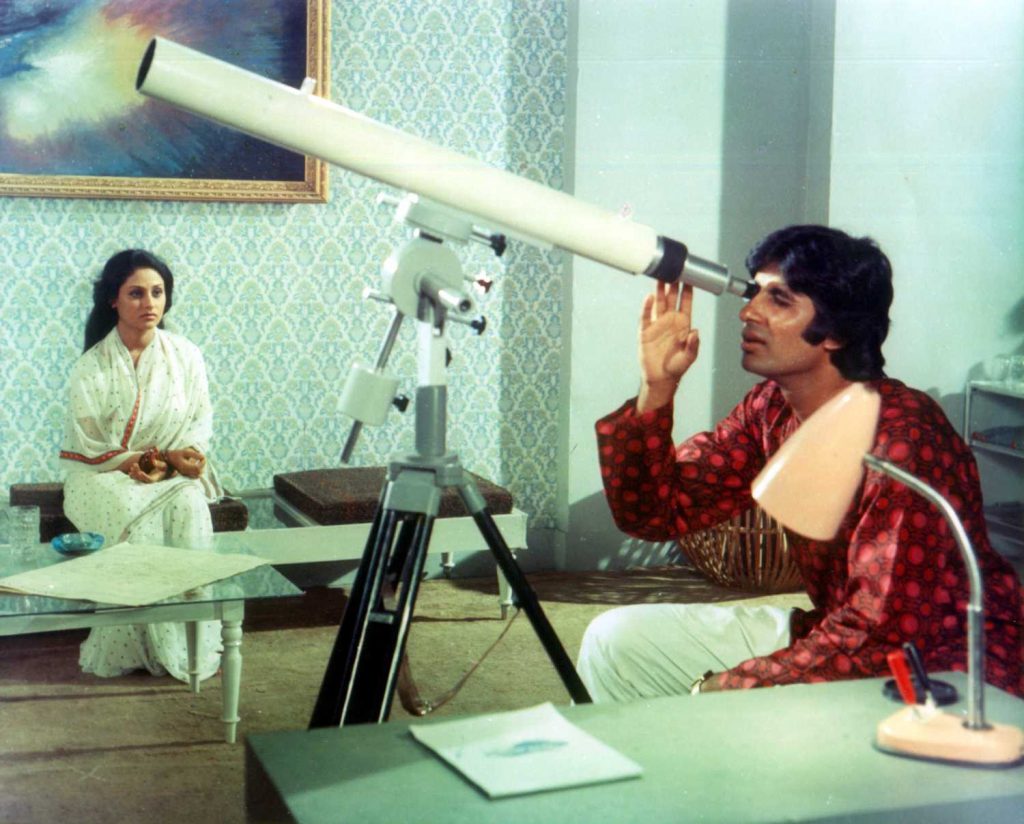

Jaya Bachchan was the star of this movie, the place she is seen to be a cheerful, happy-go-lucky younger woman who may be very pleasant with the children within the society the place she resides together with her father (Ashok Kumar). A brand new tenant, Shekhar Dayal, takes up residence on the terrace flat of the identical advanced. He retains to himself and has a telescope he usually seems to be by on the stars within the sky. However he drinks the entire day and hates to work together together with his neighbors. When Mili involves make associates with him, he treats him very rudely, and she or he turns again. Then, he realizes that she means no hurt and permits her to make use of his terrace area to coach the children in a dance quantity on the society’s program.
They fall in love, however then he learns that Mili’s days are numbered as she suffers from pernicious anemia. He insists they get married earlier than she will get in for a last surgical procedure. The movie ends on an ambiguous be aware, with the couple flying away to Switzerland in an plane and the unhappy father trying up on the sky. We’re not advised whether or not she’s going to survive the therapy or die, however that could be a good closure for the movie.
Bachchan is given a special sort of function as a darkish, offended, quiet, and unfriendly social recluse who begins to alter when he falls in love with Mili. The movie fetched Amitabh Bachchan the Best Actor Award from BFJA the next yr. Ashok Kumar performs an offbeat function because the unhappy father of Mili, and so does Aruna Irani, who performs a neighbor who angrily tells Shekhar that Mili goes to die.



